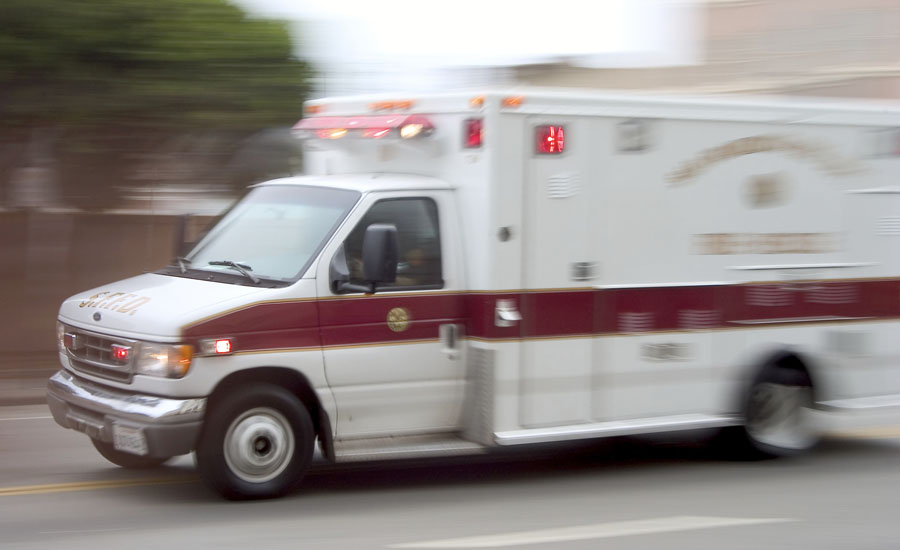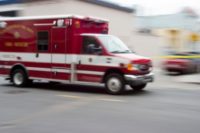Wood chipper accident claims worker’s life
Company cited for lack of safety training

A 23-year-old tree service worker died on his first day on the job when he was pulled into a wood chipper because his employer failed to train him in the safe operation of the machine, according to OSHA.
Justus Booze died on May 4, 2016 in the accident in upstate New York.
An investigation by OSHA determined that his employer, Tony Watson - who does business as Countryside Tree Service - did not ensure workers used safe operating procedures when feeding materials into the chipper, exposing them to deadly hazards.
Company "bears responsibility"
"A young man's life ended tragically and needlessly," said Robert Garvey, OSHA's Albany area director. "Countryside Tree Service bears responsibility to ensure that all phases of tree trimming, tree felling and tree removal work is performed safely. Putting employees to work with potentially dangerous machines with no safety training is unacceptable. Tree service companies must train workers - climbers, trimmers and ground crew - properly. These workers must also be instructed in safe work practices and use of equipment including chain saws, cutters and especially hand-fed wood chippers that cut and grind branches and logs into pulp."
OSHA cited the Albany-based Countryside for a willful violation for the lack of training, which resulted in untrained employees using unsafe practices to feed the wood chipper. It also cited the company for three serious violations for:
- Exposing employees to laceration and amputation hazards while operating chain saws during tree removal at three separate locations. Employees did not wear leg protection while trimming branches.
- Failing to train each employee to use personal protective equipment.
- Exposing employees to eye hazards during tree removal including wood dust, flying wood pieces, and being struck by branches during tree trimming and feeding wood into a chipper.
- Failing to ensure employees wear a protective helmet when working in areas where the potential exists for head injuries from falling objects.
The proposed fines for these violations total $141,811. The citations can be viewed here.
Wood chipper amputations way up
Wood chippers are one of the most dangerous machines used in the tree service industry. Since 2011, industry workers have suffered a six-fold increase nationally in the number of amputations - from 0.5 per 10,000 workers to 3.3 per 10,000 workers. Since 2015, OSHA has received 19 severe injury reports related to wood chippers with injuries including amputations and head trauma. Of those, five occurred because the chipper pulled fingers or arms directly into the blades, and four occurred when a machine's belt or pulley caught a body part and pulled it in. The last available report on wood chipper safety shows - from 1996 through 2005 - 39 workers died in wood chipper incidents. Of those fatalities, 78 percent saw workers caught in the chipper and most of the remainder resulted from "struck-by" accidents.
Safety procedures
OSHA recommends employers protect workers from being caught by the chipper feed mechanism by doing the following:
- Test and verify all safety devices and controls, such as emergency shut-off before using the chipper.
- Train workers in safe work procedures, including operating wood chipper safety devices and safety controls in their native language. Use the manufacturer's recommendations for each machine to explain the procedures.
- Keep at least two workers in close contact with one another when operating a chipper.
- Ensure workers wear close-fitting, tucked-in clothing; gloves and trousers without cuffs; and skid-resistant work shoes.
- Ensure that workers keep hands and feet outside the chipper's infeed hopper.
- Instruct workers to feed the wide-end of brush and limbs into the infeed hopper first.
- Position workers feeding material at the side of the machine for quick access to the emergency shut-off device and to reduce greatly the risk of branching entangling workers. Consult the manufacturer's operating manual for guidance on safe feeding as some disc-type chippers requires the worker to be on the machine's right side.
- Ensure that workers walk away once the feed mechanism has grabbed the material.
- Instruct workers to lay short material on top of longer material that is feeding or use a longer branch to push it through the infeed hopper.
- Have workers put small, raked-up material such as twigs and leaves directly into the chip truck or in trash cans or bags instead of feeding it into the chipper.
- Keep the work area around the wood chipper free of tripping hazards.
- Ensure workers wear hard hats, eye protection and hearing protection.
Looking for a reprint of this article?
From high-res PDFs to custom plaques, order your copy today!




